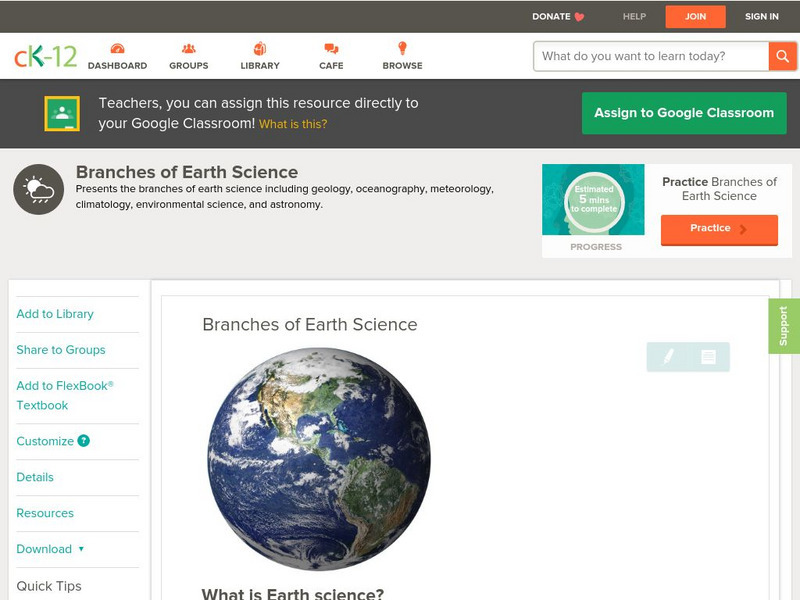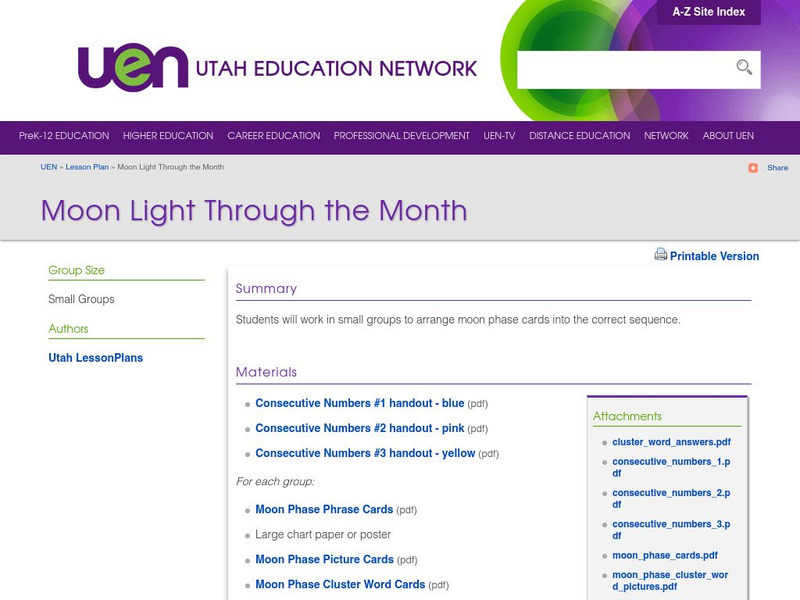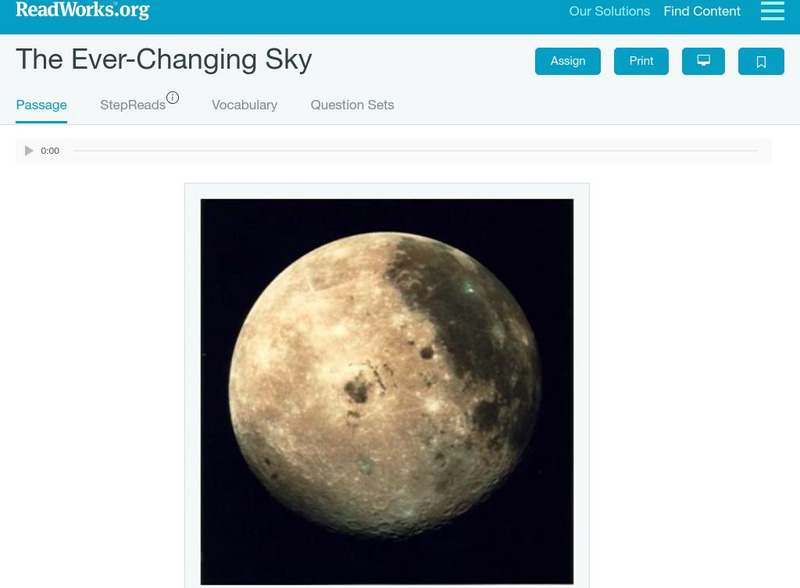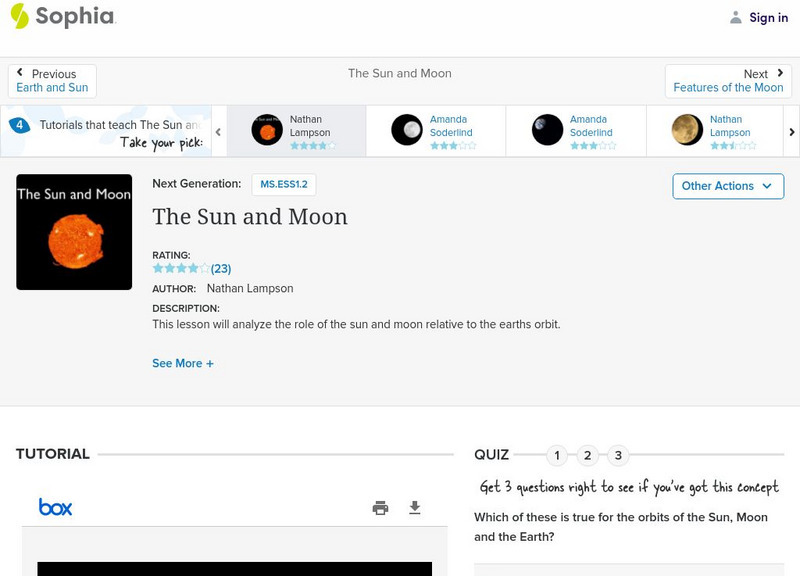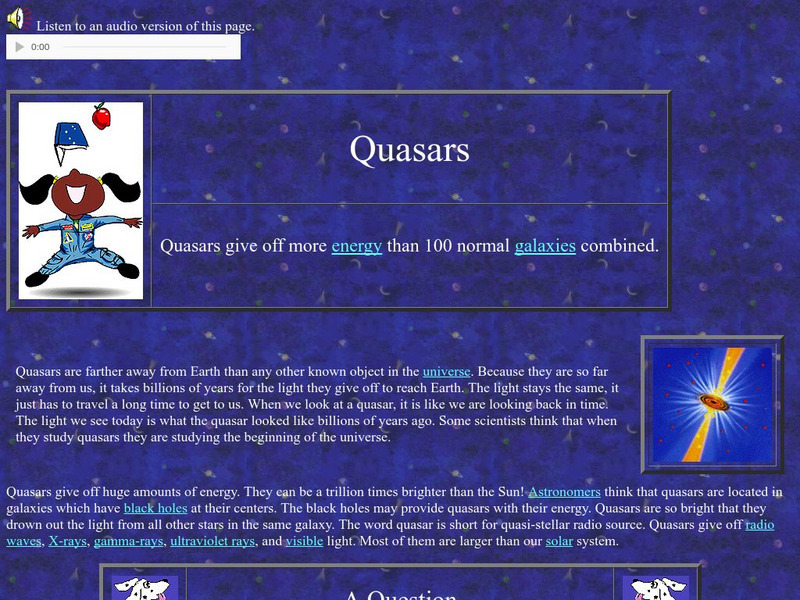Hi, what do you want to do?
Famous Scientists
Famous Scientists: Galileo Galilei
Read a short biography about astronomer Galileo, one of the most significant people in the history of science.
NASA
Nasa: Imagine the Universe: Gamma Ray Bursts
Use this site to learn all about gamma-ray bursts. Site provides links to models and other more detailed information, a movie, and links to other resources.
NASA
Nasa: Imagine the Universe: The History of Gamma Ray Astronomy
This NASA article discusses the history of gamma-ray astronomy. Related resources.
CK-12 Foundation
Ck 12: Earth Science: Branches of Earth Science
[Free Registration/Login may be required to access all resource tools.] Overview of the major branches of Earth Science.
Utah Education Network
Uen: Moon Light Through the Month
In this instructional activity, students are asked to order cards showing different phases of the moon. Includes student handouts.
American Museum of Natural History
American Museum of Natural History: Ology: In Pictures: Journey to the Stars
Two astrophysicists present images of stellar phenomena in this resource and explain why stars are so important to the existence of life on Earth.
University of St. Andrews (UK)
University of St. Andrews: Galileo Galilei
This site from the University of St. Andrews contains biographical information about Galileo's life and studies.
Nine Planets
The Nine Planets: Europa
View pictures and links to more information about Jupiter's moon Europa. Links are also provided throughout for additional information on related subjects.
University of Oxford (UK)
Mhs/oxford Virtual Science Walk/halley's House
A description of the home of Edmond Halley with some biographical details. Includes details of his life as Astronomer Royal.
Space Telescope Science Institute
Hubble Site: Hubble Monitors Weather
This site is from Hubblesite which is provided by the National Aeronautics and Space Administration. "What's the weather for Mars and Venus? The Hubble telescope has given astronomers a peak." Site provides images, video as well as...
Read Works
Read Works: Alien Planets
[Free Registration/Login Required] This nonfiction piece discusses the discovery of previously unknown planets in the solar system. This passage is a stand-alone curricular piece that reinforces essential reading skills and strategies...
Read Works
Read Works: The Ever Changing Sky
[Free Registration/Login Required] This informational text passage shares observable aspects of the sun and the moon. This passage is a stand-alone curricular piece that reinforces essential reading skills and strategies and establishes...
CK-12 Foundation
Ck 12: Earth Science: Revolutions of Earth
[Free Registration/Login may be required to access all resource tools.] How objects in the solar system orbit around each other.
CK-12 Foundation
Ck 12: Plix: Branches of Earth Science
[Free Registration/Login Required] An interactive concept map that shows how the different branches of earth science. After completing the concept map, students can test their knowledge with a "challenge me" quiz.
NASA
Nasa: Mission: Science: Electromagnetic Spectrum: Infrared Waves
Infrared light lies between the visible and microwave portions of the electromagnetic spectrum. Infrared light has a range of wavelengths, just like visible light has wavelengths that range from red light to violet.
Can Teach
Can Teach Lesson Plan: Graphing Constellations
In this lesson plan, students practice their graphing skills by following directions to recreate constellations.
Sophia Learning
Sophia: The Sun and Moon
An expertly illustrated presentation which highlights the sun and moon, and their relationship to the Earth.
NASA
Nasa Star Child: Galaxies
This resource has two levels: one for younger viewers and one for older viewers. It surveys the basic galaxy types and provides details.
NASA
Nasa Star Child: Nicolaus Copernicus (Level 1)
Part of a NASA site for younger children, this site contains a short biography of Copernicus with hyperlinks to terms. Printable version available.
NASA
Nasa Star Child: Quasars (Level 1)
Learn why quasars are the brightest things in the universe. Vocabulary words linked to a glossary of terms and a printable version are available.
NASA
Nasa Star Child: Comets (Level 1)
Younger students learn why comets race through the sky as well as related vocabulary words and meanings.
Other
Starry Skies: How Do Fossils Form?
Directions and materials needed to make a modern day fossil.
A&E Television
History.com: The Space Race: Interactive Universe
A virtual journey through space offers photos and facts about Earth and its neighboring planets, comets, other celestial bodies of the Solar System, and the Milky Way and Andromeda galaxies.
Texas Instruments
Texas Instruments: Treasure Trove
In this activity, students use a Dual Range Force Sensor to measure the weight of pennies. They understand the difference between mass and weight. Students also determine the difference in weight of an object on the moon, Mars, Saturn,...








